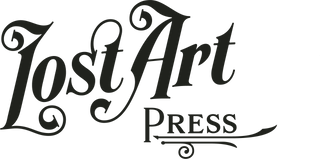James Krenov: Leave Fingerprints
by Brendan Bernhardt Gaffney
Note: You can download an excerpt of this book here.
James Krenov (1920-2009) was one of the most influential woodworking writers, instructors and designers of the 20th century. His best-selling books – starting with “A Cabinetmaker’s Notebook” – inspired tens of thousands of people to pick up the tools and build things to the highest standard.
Yet, little is known about his life, except for a few details mentioned in his books.
After years of research and more than 150 interviews, Brendan Bernhardt Gaffney has produced the first and definitive biography of Krenov, featuring historical documents, press clippings and hundreds of historical photographs. Gaffney traces Krenov’s life from his birth in a small village in far-flung Russia, to China, Seattle, Alaska, Sweden and finally to Northern California where he founded the College of the Redwoods Fine Woodworking Program (now The Krenov School).
“James Krenov: Leave Fingerprints” brims with the details of Krenov’s life that, until now, were known only to close friends and family. The book begins by examining the noble origins of Krenov’s mother in Russia, and her flight into the wilderness during the country’s revolution. After Krenov is born among the Chukchi at a trade outpost, the Krenovs flee to Shanghai and then the United States. After time in Alaska and Seattle, Krenov heads to Sweden where he works in a factory and tries to get his writing published.
While in his 30s, he attends Carl Malmsten’s school and transforms – in just a few short years – into an accomplished woodworker with a national reputation. He then attracts international recognition for his attention to grain, his love of joinery and his sensitive approach to the craft.
Eventually Krenov’s words came to America, he publishes “A Cabinetmaker’s Notebook” and the woodworking world has never been the same. After the establishment of the College of the Redwoods program in Fort Bragg, California, the word “Krenovian” enters the lexicon of design to describe his type of work and the work of the students that carried on their teacher’s methods.
Though Krenov is revered by readers and many students, he was also known for his irascible nature and pointed criticism. Gaffney’s book takes pains to paint a fully realized portrait of Krenov, neither a hagiography nor a hatchet job. Interviews, letters, press clippings and archival photographs present a man who did not compromise in his work. And that lack of compromise created both great works and personal difficulties.
In addition to biographical details, Gaffney’s book presents a gallery of Krenov’s work from his very early pieces all the way up to the last cabinet he built. Many of these pieces have never been published, and they illustrate how Krenov continued to grow as a designer even after he stopped writing books.
Whether you are a furniture maker, a designer or a student of craft history, “James Krenov: Leave Fingerprints” will deepen your understanding of and appreciation for a man who single handedly changed the course of woodworking.
About the Book
Like all Lost Art Press books, “James Krenov: Leave Fingerprints” is produced entirely in the United States. It is printed on heavy 80# coated matte paper for crisp text and superior color reproduction. The pages are sewn and taped to create a permanent binding. And then the pages are attached to cloth-covered boards and wrapped in a thick and durable dust jacket.
Table of Contents
Acknowledgments ix
Foreword by David Welter xi
Prologue xv
Away to the East 1
Born on the Chukchi Soil 9
An Interlude in Shanghai 15
A Childhood in the North 21
A Quiet Cottage on Alki Point 33
‘A Pre-Kerouac Hippie’ 41
Britta 47
A Calm New Responsibility 53
The Old Master’s School 59
Working Away in the Basement 71
Liv i Trä 81
An Eye Abroad 93
American Dreams 109
‘A Cabinetmaker’s Notebook’ 125
The Song and Dance 139
The Mendocino Coast 151
A New School in the Redwoods 169
Settling In and Setting Out 189
Wakened Hands 207
The Last Glass Door 223
‘Old Jim’ 233
Afterword 245
Appendix A: Gallery of Work 251
Appendix B: Bibliography 277
Index 281
About the Author

Brendan Bernhardt Gaffney is a furnituremaker, design, writer and educator. He grew up in the northeast, where he learned woodworking and a passion for creativity from his father. At Skidmore College, he created and pioneered his own major, Sound. He also worked as lead recording engineer and supervisor at Arthur Zankel Music Center, as a student and protégé of Flip Phillips in the Neuroscience department and as technical director of the radio station WSPN. After college, Brendan earned a Master of Arts in Music at University of California San Diego and worked with Fab Lab San Diego to teach younger students the art of design and fabrication. From San Diego, Brendan moved to the Mendocino Coast of California, to attend the College of the Redwoods Fine Woodworking program (now The Krenov School). Brendan has spent the past decade working as a cabinetmaker, chairmaker and basketmaker, with an emphasis on holistic craft that starts at the source of his materials. As a writer, he has written for Popular Woodworking and Mortise and Tenon Magazine. As a teacher, Brendan has taught at the Marc Adams School of Woodworking, Port Townsend School of Woodworking, Lost Art Press storefront and in private classes, with a focus on cabinetmaking, toolmaking and green woodworking.







